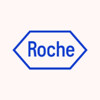
A Study to Evaluate Safety, Tolerability, and Pharmacokinetics of Escalating Doses of AGS67E Given...
Acute Myeloid LeukemiaThe purpose of this study is to evaluate the safety and tolerability of AGS67E in subjects with acute myeloid leukemia (AML) and determine a safe dose for future development. In addition, this study will assess the pharmacokinetics (PK), the immunogenicity, and the anti-leukemic activity of AGS67E.

Safety, Tolerability and Pharmacokinetics of Milademetan Alone and With 5-Azacitidine (AZA) in Acute...
Acute Myelogenous LeukemiaMyelodysplastic SyndromeThis study will take place in parts: Dose Escalation (Part 1): Participants receive milademetan alone with different dose schedules Dose Escalation (Part 1A): Participants receive milademetan in combination with 5-azacytidine (AZA), with different dose schedules The recommended dose for Part 2 will be selected. Dose Expansion (Part 2): After Part 1A, participants will receive the recommended Part 2 dose schedule. There will be three groups - those with: refractory or relapsed acute myelogenous leukemia (AML) newly diagnosed AML unfit for intensive chemotherapy high-risk myelodysplastic syndrome (MDS) End-of-Study Follow-Up: Safety information will be collected until 30 days after the last treatment. This is the end of the study. The recommended dose for the next study will be selected.

A Study Evaluating the Safety of Tocilizumab in Addition to Standard of Care Premedication Given...
B-Cell Chronic Lymphocytic LeukemiaThis multicenter, double-blind, randomized, placebo-controlled study will evaluate the safety of a single infusion of tocilizumab versus placebo, administered in addition to standard premedications (antipyretic, antihistamine, and corticosteroid) prior to the first infusion of obinutuzumab administered in combination with oral chlorambucil to participants with previously untreated B-CLL who have comorbidities. All eligible participants will be treated with a total of 6 cycles of obinutuzumab + chlorambucil (cycle length = 28 days).

Moxetumomab Pasudotox (CAT-8015, HA22) in Children With B-lineage Acute Lymphoblastic Leukemia and...
Acute Lymphoblastic Leukemia (ALL)This is a phase II, open-label, nonrandomized, prospective study to evaluate the activity, safety, and feasibility of administration of moxetumomab pasudotox in the pre-allogeneic hematopoietic cell transplantation (HCT) setting to patients with B-lineage Acute Lymphoblastic Leukemia (ALL) who are in a morphologic complete remission and have pre-transplant minimal residual disease (MRD) > 0.01% (detected by flow cytometry). The primary objective of this study is to determine if treatment with moxetumomab pasudotox in the MRD positive setting is able to lead to MRD negativity (< 0.01% by flow cytometry) or at least a 1-log10 reduction in MRD prior to allogeneic HCT.

PF-05212384 (PKI-587) for t-AML/MDS or de Novo Relapsed or Refractory Acute Myeloid Leukemia (AML)...
Therapy-related Acute Myeloid Leukemia and Myelodysplastic SyndromeAcute Myeloid Leukemia2 morePhase II open-label single-arm prospective multicentric clinical trial of PF-05212384 (PKI-587) delivered by intravenous route. A 2-stage Fleming design will be employed.

Bortezomib and Vorinostat in Younger Patients With Refractory or Relapsed MLL Rearranged Hematologic...
Mixed Lineage Acute LeukemiaAcute Myeloid Leukemia1 moreThis study will test the safety and effectiveness of adding bortezomib and vorinostat to other chemotherapy drugs commonly used to treat relapsed or refractory leukemia. Both drugs have been approved by the Food and Drug Administration (FDA) to treat other cancers in adults, but they have not yet been approved tor treatment younger patients with leukemia. PRIMARY OBJECTIVE To estimate the overall response rate of patients with MLL rearranged (MLLr) hematologic malignancies receiving bortezomib and vorinostat in combination with a chemotherapy backbone. SECONDARY OBJECTIVES Estimate event-free and overall-survival. Describe toxicities experienced by participants during treatment. OTHER PRESPECIFIED OBJECTIVES To identify all genomic lesions by comprehensive whole genome, exome and transcriptome sequencing on all patients. To compare minimal residual disease (MRD) results by three modalities: flow cytometry, polymerase chain reaction (PCR) and deep sequencing.

Ruxolitinib Phosphate or Dasatinib With Chemotherapy in Treating Patients With Relapsed or Refractory...
Recurrent B Acute Lymphoblastic LeukemiaRecurrent Ph-Like Acute Lymphoblastic Leukemia2 moreThis phase II trial studies the side effects and best dose of ruxolitinib phosphate and how well it works compared to dasatinib when given with chemotherapy in treating patients with Philadelphia chromosome-like acute lymphoblastic leukemia that has come back (relapsed) or has not responded to treatment (refractory). Ruxolitinib phosphate and dasatinib may stop the growth of cancer cells by blocking some of the enzymes needed for cell growth. Drugs used in chemotherapy work in different ways to stop the growth of cancer cells, either by killing the cells, by stopping them from dividing, or by stopping them from spreading. It is not yet known whether giving ruxolitinib phosphate or dasatinib with chemotherapy works better in treating patients with previously treated acute lymphoblastic leukemia.

Monitoring and Treatment of Relapsed Leukemia Following Allogeneic Hematopoietic Stem Cell Transplantation...
LeukemiaThis study aims to monitor patients for relapse of the leukemia following allogeneic Hematopoietic Stem Cell Transplantation (HSCT) in order to identify patients early in relapse, with a low burden of disease, when interventions may be more successful by monitoring of peripheral blood lineage specific chimerism. Once disease has been confirmed, patients will initiate a novel combination of bortezomib and pravastatin.

Nivolumab and Dasatinib in Treating Patients With Relapsed or Refractory Philadelphia Chromosome...
B Acute Lymphoblastic Leukemia With t(9;22)(q34;q11.2); BCR-ABL1Recurrent Adult Acute Lymphoblastic Leukemia3 moreThe purpose of this research study is to determine the acceptable upper limit dose of nivolumab in combination with dasatinib that may be given to patients with relapsed/refractory philadelphia chromosome positive acute lymphoblastic leukemia (Ph+ ALL). Nivolumab is currently Food and Drug Administration (FDA) approved for other cancers, but has not yet been investigated in Ph+ ALL. Dasatinib is currently FDA approved for the treatment of Ph+ ALL, but has not yet been investigated in combination with nivolumab for this disease. There is evidence that dasatinib not only blocks the Philadelphia chromosome or breakpoint cluster region-Abelson murine leukemia viral oncogene homolog 1 (BCR-ABL) mutation, but also increases the activity of cells in your immune system. Nivolumab increases T cells in your immune system, which allows your immune system to attack the cancer. We think the combination of these drugs will be more effective against your leukemia than either drug used alone.

Donor Stem Cell Transplant in Treating Patients With High Risk Acute Myeloid Leukemia
Adult Acute Megakaryoblastic Leukemia (M7)Adult Acute Monoblastic Leukemia (M5a)25 moreThis phase I trial studies the side effects of donor stem cell transplant in treating patients with high risk acute myeloid leukemia. Giving low doses of chemotherapy before a donor peripheral blood stem cell transplant helps stop the growth of cancer cells. It may also stop the patient's immune system from rejecting the donor's stem cells when they do not exactly match the patient's blood. The donated stem cells may replace the patient's immune cells and help destroy any remaining cancer cells (graft-versus-tumor effect)
